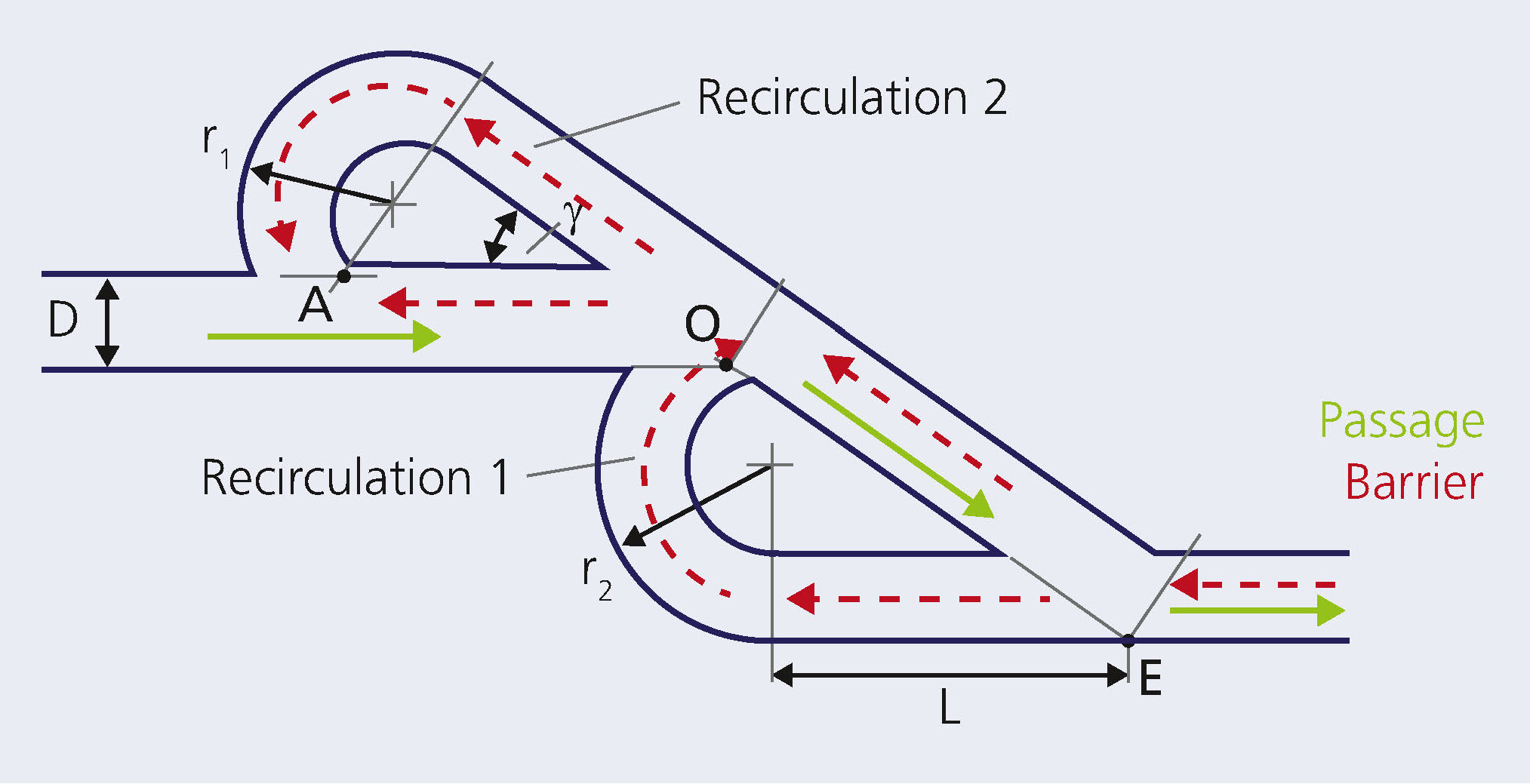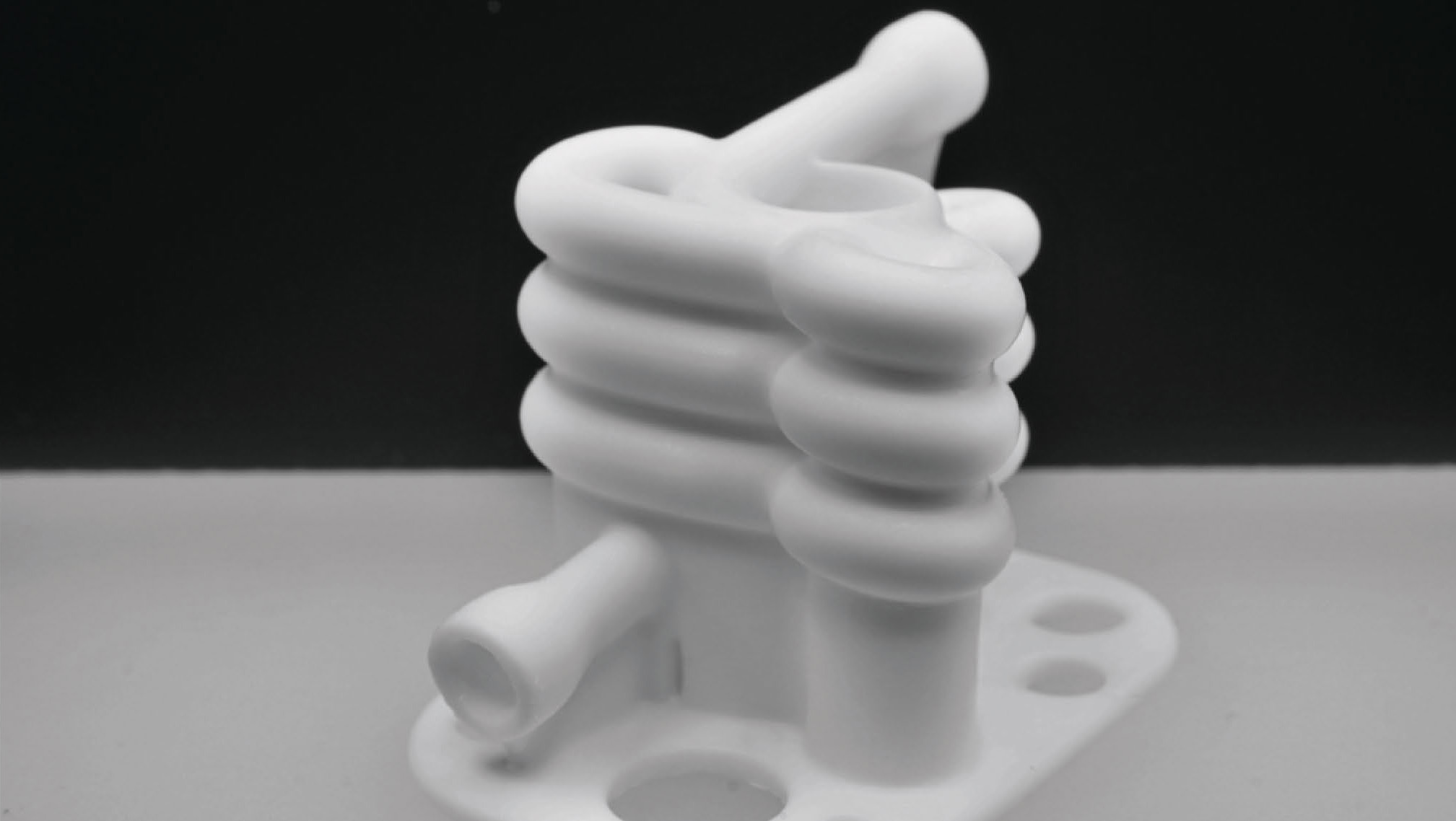
Ceramic Tesla valve
Current research



Valves are essential for almost all processes in which fluids are supplied or discharged in a defined manner. The Tesla valve is a special type of valve. This passive, fluidic valve was patented by Nikola Tesla in 1916. In contrast to traditional valves, the Tesla valve is a type of non-return valve without moving mechanical parts.
Ceramic Tesla valves
Ceramic materials possess outstanding thermal, chemical and mechanical properties and are therefore highly interesting for combustion processes, among other applications. During the combustion of gases (e.g. natural gas or hydrogen) for heat generation or within a combustion chamber for space propulsion, a flashback of the combustion into the supply system and the storage tank of the fluids must be avoided at all costs. In this context, valve designs without moving parts are highly attractive, especially for space applications, where high mechanical loads occur during the launch phase.
Diodicity
The key parameter of a Tesla valve is diodicity. It describes the ratio between the pressure losses of the flow in the opposite direction and the flow direction and is dependent on the volume flow. With the Tesla valve, the aim is to achieve the highest possible diodicity by using geometrically complex channels to achieve a low pressure loss in the flow direction and a high pressure loss in the opposite direction. The latter is achieved, for example, by channeling and recirculating the fluids against the actual flow.
CerAMfacturing = Additive manufacturing of ceramics
Additive manufacturing (AM) processes open up completely new opportunities in the geometric design of components, especially for very hard and therefore difficult-to-machine ceramic materials. AM is able to leverage the third dimension for the design of Tesla valves. As a result, diodicity is significantly increased. Current work at Fraunhofer IKTS focuses on component design and flow simulation in order to further improve the diodicity and manufacturability of ceramic Tesla valves.
Very good surface properties
Flow resistance is influenced, among other things, by the friction of the fluid on the wall and is therefore significantly dependent on surface roughness. Components made of Al2O3 using CerAM VPP (vat photopolymerization, a subtype of stereolithography) have Ra values below 2 µm even on doublecurved surfaces and are therefore better than metallic AM components (Ra > 20 µm) by approx. one order of magnitude. This is achieved through finer ceramic powders (< 1 µm) and the diffusion processes during the subsequent sintering of the components.
Services and cooperation offered
- Design and simulation of geometrically highly complex components for a wide range of applic
- Selection of suitable ceramic, hardmetal or glass materials according to the application scenario
- Selection of suitable additive or conventional manufacturing processes according to the requirements of the component design
- Manufacturing of individual components through to prototype series production